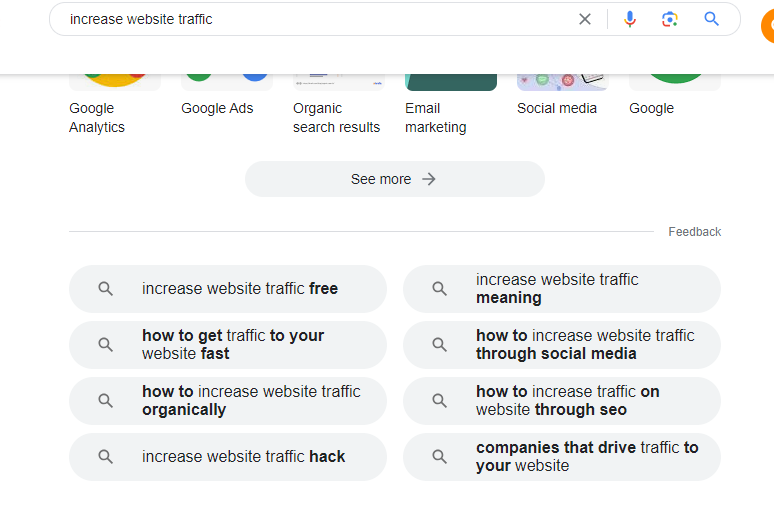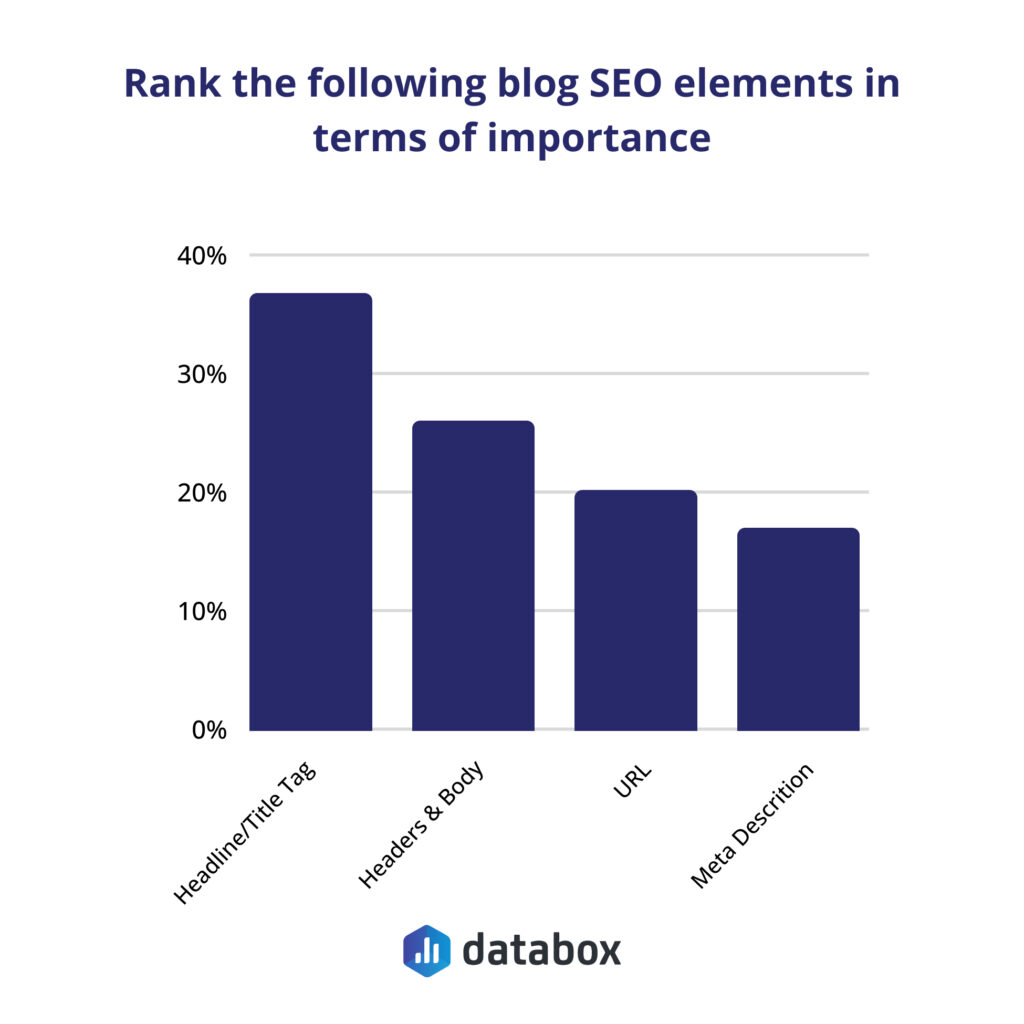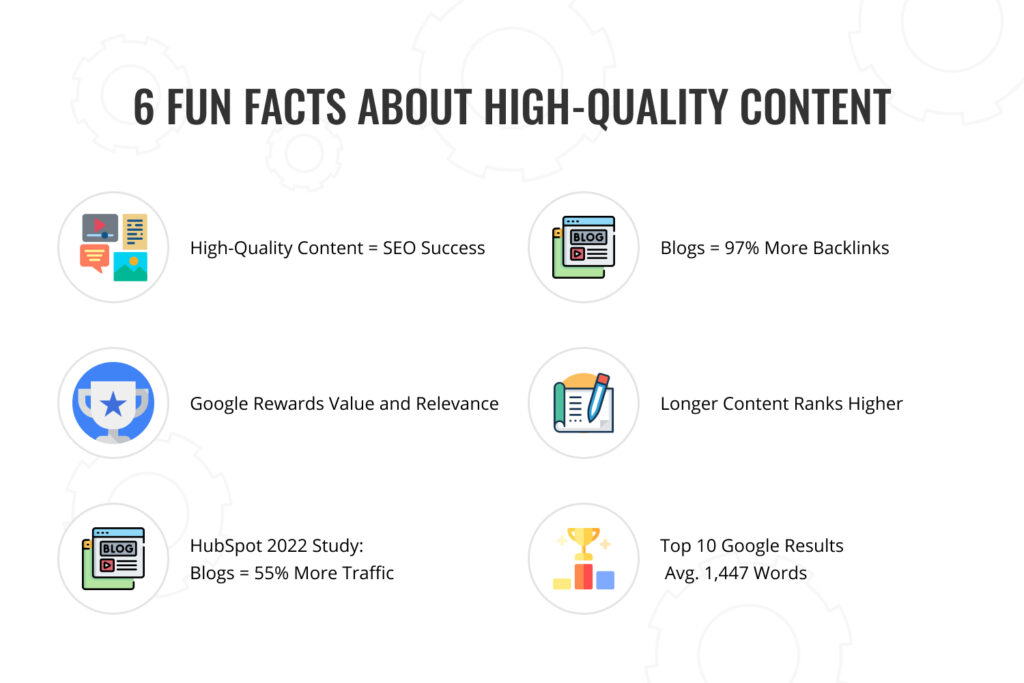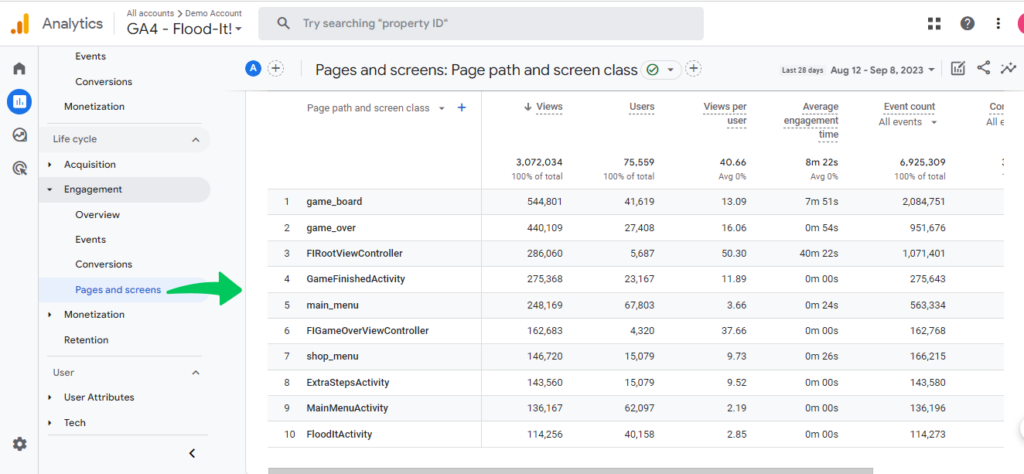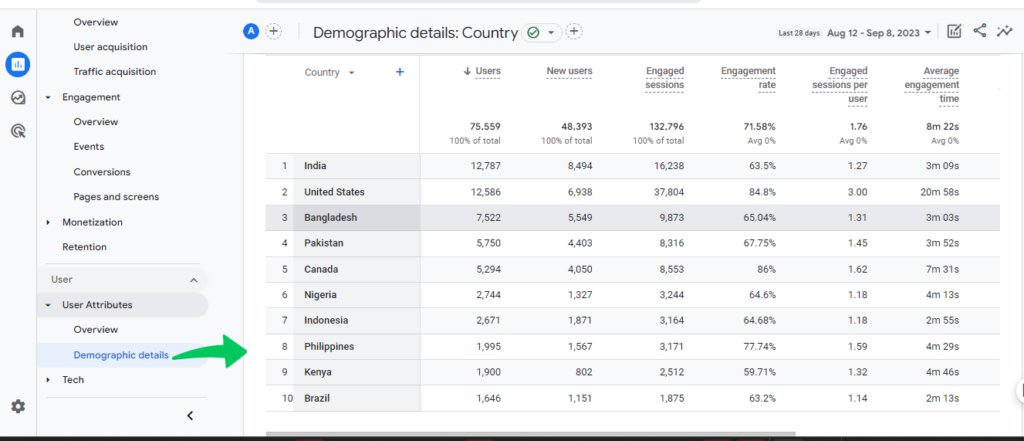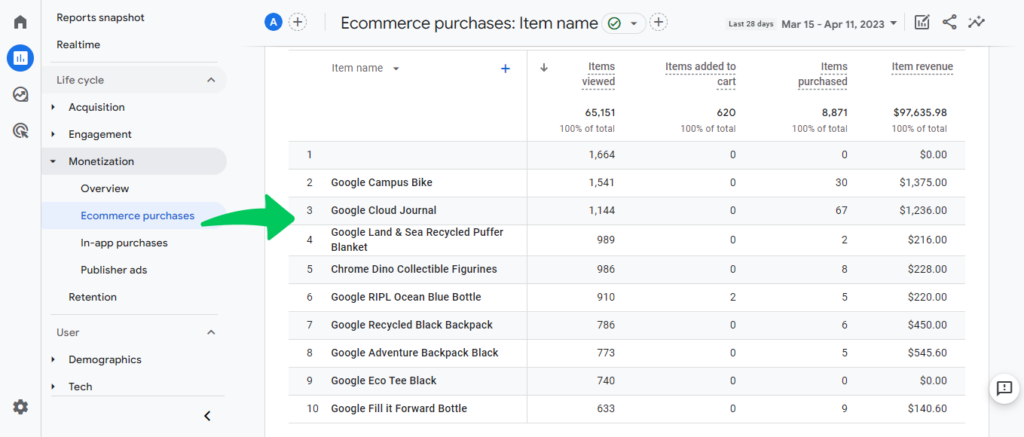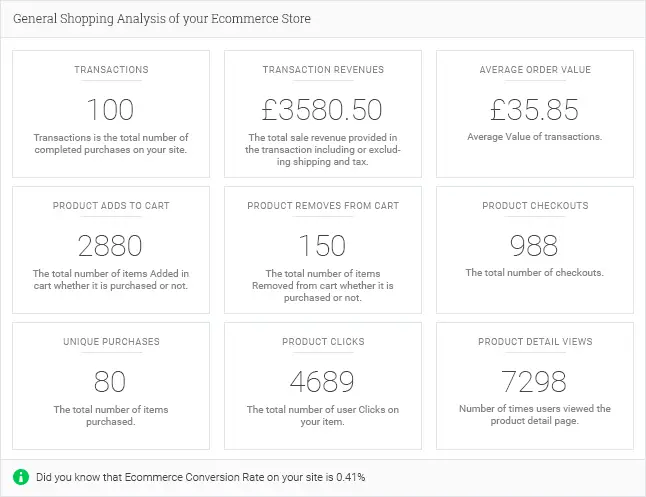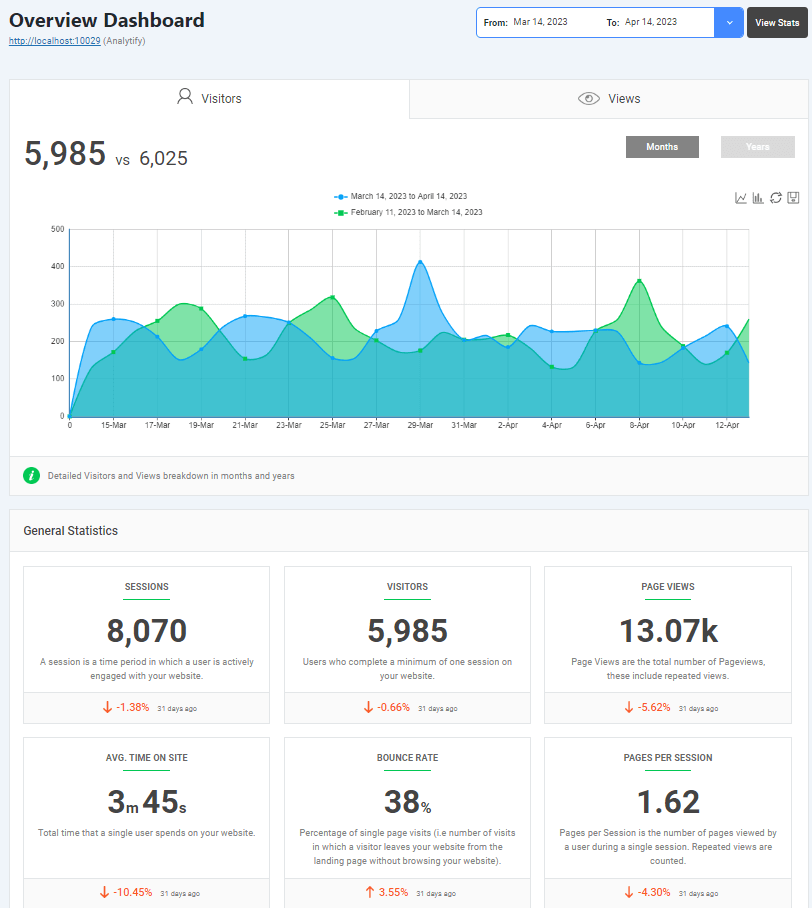
21+ Ways To Increase Website Traffic on WordPress
Are you looking to increase website traffic on your WordPress site in 2024?
Attracting more website visitors is the first step towards boosting your online visibility, potentially leading to more business in general.
In this blog post, we will explore 21+ proven strategies that help you drive more traffic to your WordPress site.
By focusing on these fundamental ways, you can develop targeted strategies to increase website traffic organically, ultimately boosting your business.
In this article:
What are the Most Effective Ways to Increase Traffic to Your Website?
Some of the most effective ways to increase website traffic organically include search engine optimization (SEO), creating high-quality content, leveraging social media, and utilizing Google Analytics to monitor and drive web traffic.
Let’s explore the most effective strategies to boost traffic to your website. To make it easier for you to navigate and implement these techniques, we have divided them into sections:
- SEO
- Quality Content
- Social Media
- Driving Traffic from Google Analytics
You can improve your website performance and attract more visitors by concentrating on these effective ways. Keep reading as we dive into each section, providing tips to help you grow your online presence and increase your website traffic free.
How to Increase Website Traffic through SEO
Increasing traffic to your website through SEO is necessary and important in this digital age. SEO, or Search Engine Optimization, is the process of improving your website visibility in various ways to enhance its visibility for relevant searches on search engines like Google, Bing, etc.
- Google is the most popular search engine. According to Statista, Google has a mobile market share of 95.32% and a desktop market share of 81.95%. Bing, Yandex, and Yahoo then follow it.
- According to Internet Live Stats, Google received 943 billion queries in 2022.
- 70% of buyers study online before purchasing and talking to a salesperson.
So, being high in search engines lets buyers know you on their own and your terms. Simply put, you’ll get more organic traffic if you rank well on Google.
The better visibility your web pages have in search results, the more you’ll attract new and existing customers to your website.
It’s not just about attracting more visitors but about attracting the right visitors who will likely be interested in your website.
By strategically using SEO, you can optimize your website to rank higher on search engine results pages, drawing more traffic.
Before investing in traffic strategies, it’s essential to understand the costs and strategies involved in building a website. Learn how much it costs to build a website in this article.
Here are 6 ways to increase traffic on your website through SEO:
1. Through Keywords
Keywords are the foundation of SEO. Conduct thorough keyword research to discover what phrases your target audience is searching for.
First, Dive into Your Audience’s Mind
Think of keyword research as getting into the minds of your visitors. What words or phrases would they type into the search bar to find what you offer? It’s like psychic detective work! Make a list of these primary and secondary keywords that capture specific queries.
Choose the Right Tools
Just like a craftsman needs the right tools, you need a good keyword research tool. Tools like Google Keyword Planner, Ubersuggest, or SEMrush are prominent. They reveal the search volume and competition and even suggest related keywords. You can also find keywords by monitoring trending topics in Google Trends and aligning your content strategy accordingly. This will provide you with a competitive edge in search rankings. It’s like having a treasure map with all the secret spots marked!
Keywords are the foundation of SEO. Conduct thorough keyword research to discover what phrases your target audience is searching for.
Select Focus Keyword
You must select a focused keyword or key phrase. You can get up close and more specific towards your focused keywords, leading to a Longtail Keyword.
It’s said that almost 50% of organic searches contain Longtail Keywords.
They are like the rare gems of SEO. They drive online traffic better than conventional search queries. According to the Smart Insights study of 2022, longtail keyword searches get 3-5% more clicks than basic searches. However, this statistic is still applicable to 2023-2024.
Long keywords may not have a massive search volume, but they’re incredibly targeted. Think of it this way: “Google Analytics tips for eCommerce websites” is a gem that will attract people specifically interested in that topic and having eCommerce websites.
Longtail keywords are very important. So, if your business is not using longtail keywords, you should start now. Then, you can see the change by analyzing your web traffic. You can analyze your web traffic through Analytify.
Apart from long-term keywords, you must also not ignore medium-tail keywords. They hold great significance. They strike a balance between the high competition of short-tail keywords and the specificity of long-tail ones. Bloggers optimizing their content around medium-tail keywords can capture a more relevant audience, improve search engine rankings, and enhance the overall user experience.
Here are examples of medium-tail, short-tail, and long-tail keywords related to the topic of “travel destinations in Europe.”:
- Medium-Tail Keyword: “Best European vacation spots”
This keyword balances specificity and search volume. It’s more targeted than a short-tail keyword like “Europe travel” but less specific than a long-tail keyword like “Romantic honeymoon destinations in Europe.”
- Short-Tail Keyword: “Europe travel”
Short-tail keywords are broad and highly competitive. They have a high search volume but lack specificity. Ranking for such keywords can be challenging due to the intense competition.
- Long-Tail Keyword: “Romantic honeymoon destinations in Europe”
Long-tail keywords are highly specific and typically have lower search volume. However, they attract a more focused audience. In this case, the keyword targets couples seeking specific travel ideas, which can result in higher conversion rates.
2. Through Latent Semantic Indexing (LSI)
You must also master the art of Latent Semantic Indexing (LSI).
LSI enables search engines to identify related terms and phrases semantically relevant to the main keyword. Incorporating these related phrases naturally within your content can enhance its relevance to the search query.
When your content is optimized using LSI, it’s more likely to provide value to users. This leads to better user engagement metrics, such as longer time spent on your site and lower bounce rates, which can indirectly contribute to improved SEO rankings.
A recent study found that the organic search traffic rate of websites that used LSI keywords in their content was 68% higher than those that didn’t. Also, 60% of marketers using LSI keywords said their search engine rankings went up, and 75% said it helped their overall SEO approach (Outreach Monks).
To use LSI keywords for SEO, you should conduct thorough keyword research and identify related terms, synonyms, and variations of your target keywords.
One easy way to find LSI keywords is by searching on google for the focus keyword and scroll down to related searches. These are your LSI keywords as shown in the screenshot below:
You can explore other ways to find LSI keywords.
Integrate these keywords naturally into your content while maintaining high-quality writing that provides value to your audience.
For example, if your focused keyword is “Google Analytics tips for eCommerce websites,.” You can use the following LSI keywords and phrases in your content:
- Ecommerce analytics best practices
- Using Google Analytics effectively for online stores
- Enhancing eCommerce performance with data insights
Look at the content below on how LSI keywords can be incorporated:
The LSI keywords and phrases are effectively integrated into the content in the above example. This enhances its relevance, depth, and value to search engines and readers interested in Google Analytics tips for eCommerce websites.
3. By Optimizing the Headline and Meta Title
Your headline will inform search engines, social media feeds, and newsletters about your business or information.
Your headline matters more than the body of the content because if it is compelling, your audience will click on it. Your traffic and ranking will increase if you spend time on headlines.
Customize your meta descriptions and title tags to include primary or focused keywords. These elements are what users first see on search engine results pages, so make them descriptive and compelling to attract users to click through to your site.
Make sure that your target/focused/primary keyword is in
- Title tag
- Meta description
- Image Alt Tag
- 1-1.5% of the total content (Keyword Density)
Using keywords helps Google figure out what your page is about.
You can rank your content by giving importance to the blog elements based on the ratio given in the following chart, suggested by Databox.
4. Through Optimizing URLs
Optimizing your URLs for search engines can significantly improve your website’s visibility and traffic. Below are a few ways to Optimize your URLs for better SEO and to increase website traffic.
1. Keep URLs Simple and Readable
- Use simple English in your URLs where possible.
- Avoid using codes, special characters, or overly complex strings of numbers.
2. Include Keywords
- Use your primary keyword for the page in the URL.
- Don’t stuff your URL with keywords; this could be seen as spammy.
3. Avoid Using Long URLs
- Shorter URLs are easier to share and remember. They also tend to perform better in search results.
4. Avoid Deep Nesting
- Instead of having a URL structure like `example.com/a/b/c/d/e/topic,` try to minimize the number of sub-directories.
5. Implement 301 Redirects
- If you change a URL for any reason, make sure you set up a 301 redirect from the old URL to the new one.
6. Avoid URL Changes
- Once you’ve set a URL and it’s been indexed, try not to change it. If you must, ensure you set up the appropriate 301 redirects.
7. Secure Your Site with HTTPS
- Google has confirmed that HTTPS is a ranking factor. Ensure your site is secure and your URLs begin with “https://” rather than “http://”
By carefully crafting your URLs with SEO in mind and following these best practices, you can improve your website’s chances of ranking higher in search engine results pages (SERPs), leading to increased traffic.
5. By Adopting Local SEO Strategies
Local search optimization can help you attract local customers and boost your traffic. If you have any physical presence along with digital, your website should be locally optimized to be found by individuals in your business’s area.
Google released the first Pigeon upgrade in July 2014, allowing local businesses to compete with their larger competitors. This SEO update saved local businesses in a competitive SEO landscape. Local companies have thrived in local search results since then.
Let’s look at the local SEO statistics that can help you increase traffic on WordPress
- 46% of all Google searches are for local companies or local services (Search Engine Roundtable).
You can attract more qualified, time-sensitive, and ready-to-buy audiences by doing local SEO.
- “Near Me” searches rose to 130% in 2020 (Google Data).
Googlers love to search “near me.”
According to a report, people search for the following.
- “Nearby Petrol Station,”
- “Nearby Restaurants,”
- “Nearby car workshops.”
You may have done these searches. When you type “nearby tailors,” you expect a location and inventory, not a slow-loading website that hides it.
As marketers, you must ensure people can find the answers they want. Doing so captures their attention and can increase your sales.
For this, you must ensure your name, address, and phone number are up to date online. Also, make sure your business is optimized for Google My Business.
6. Through Mobile Optimization
Ensure your website is optimized for mobile devices to enhance user experience. It will ultimately help you to increase your traffic.
Google now ranks websites based on their mobile performance. A non-responsive website with a poor mobile user experience would struggle to rank.
Google’s Mobile-First Indexing, implemented in 2021, prioritizes mobile-friendly sites in search results, leading to increased organic traffic for mobile-optimized websites.
The following stats help you understand the importance of mobile optimization to attract more traffic.
- In 2022, 59% of all internet traffic worldwide was done on mobile devices (Global Stats).
- According to a study in 2019, 75% of smartphone users want immediate information (Think with Google).
- A mobile page’s bounce rate is 1% for pages that load in 2.4 seconds or less, while the rate is 32% for pages that take 3.3 seconds to load.
So, you can optimize your site for mobile devices by using responsive design, which automatically adapts your website’s layout and content to match any screen size.
You can use Google’s mobile-friendly test tool to ensure your website is responsive and mobile-friendly.
How to Increase Website Traffic with Quality Content
You’ve probably heard the saying “content is king” in SEO, and it is one of the most important Google ranking factors!
No one knows for sure how long it will stay on top, except maybe Google.
When it comes to boosting your website’s traffic with high-quality content, the journey begins with a commitment to providing valuable and engaging information to your audience. Quality content isn’t just about words on a page. It’s about solving problems, answering questions, and sparking interest.
To achieve this, consider strategies like business blogging, where you regularly share insights and expertise. Focus on creating informative, well-researched, and relevant content to your niche. Keep an eye on your competitors, learning from their successes and adapting their approaches to suit your brand. Embrace visual content like infographics and videos to make your message more captivating.
Collaborate with influencers through guest posting, and don’t forget to repurpose your best content into different formats. Lastly, ensure your content is SEO-friendly to help it rank higher on search engines, driving organic traffic. Ultimately, it’s about creating content your audience needs and wants. That’s how you can drive more traffic to your WordPress site.
Here are five thoughtful strategies to help you increase your website traffic through quality content.
1. Through Business Blogging
If you are wondering how to drive more traffic to your website, business blogging can be your golden ticket. Business blogging is like conversing with your audience, where you share valuable information, tips, and updates about your industry. Regular blogging can help establish your website as a go-to resource, enhancing its visibility and attracting more traffic.
Identify Your Target Audience:
First, understand your target audience’s interests and needs. This knowledge will help you create content that resonates with them.
Set Clear Goals:
Determine your specific goals for increasing website traffic through blogging. These could include increasing overall traffic, generating leads, or boosting sales.
2. Through High-Quality Content
You must craft quality content after identifying your target audience and setting your goals. Focus on creating content that’s not only informative but also well-researched and relevant to your niche.
To achieve high-quality content, you can follow the below tips:
- Write informative, valuable, and engaging content that addresses the interests and needs of your target audience.
- Use attention-grabbing headlines and subheadings to make your content easily scannable.
- Focus on content readability, fluency, and uniqueness. If any of these aren’t up to the mark, then rephrase the content using a paraphrasing tool.
- Incorporate visuals like images, infographics, and videos to enhance the user experience.
- High-quality content can lead you to get more backlinks. Backlinks are considered the backbone of SEO. High-quality content attracts readers and also invites other websites to link back to your site. Google says backlinks are one of the top three ranking criteria. Writing interesting blogs can get you backlinks, showing Google your website is trustworthy.
- Do add FAQs section in your blog post. Adding structured data and FAQ schema to your content can enhance its visibility in search results. Google may display FAQ snippets in search results, which can improve click-through rates (CTR).
You can understand the importance of High-Quality Content by looking at the following statistics:
- High-quality content is a critical factor in SEO. Google rewards websites that provide valuable and relevant information to users.
- According to HubSpot’s 2022 study, blogs generate 55% more traffic. When analyzed, these blog-publishing sites had 97% more backlinks than others.
- Along with quality content, the length of content also matters. Backlinko found that the average number of words on the top 10 Google search results pages was 1,447.
- Earning a featured snippet position in Google can significantly increase organic traffic. Structured content and clear answers to common questions can increase your chances of being featured.
So, when creating any blog post or webpage, ensure you include enough content to cover your topic thoroughly. It’ll help you in getting high ranks. This means you can have good search engine optimization by publishing quality content containing backlinks and standard length.
3. Through Competitor Analysis
“Competitive strategy is about being different. It means deliberately choosing a different set of activities to deliver a unique mix of value.” Porter, M. E. (1996). What is Strategy? Harvard Business Review
You can spice up your content through competitive analysis. Studying your competitors gives you the golden opportunity to learn from the best in your niche. By examining what they’re doing right, you can craft strategies that resonate well with your target audience, ensuring that your content doesn’t just blend in but stands out brilliantly. It can provide you with valuable insights into what works and what doesn’t.
By analyzing their content strategies, you can identify gaps and opportunities to create content that stands out, eventually driving more traffic to your site.
By doing a thorough competitor analysis, you can pinpoint the types of content that are making waves in your industry. Whether it’s engaging blog posts, infographics, or podcasts, you’ll be equipped to create content that’s not just good but great. You can even find gaps in your competitors’ offerings and fill them with your unique insights and perspectives.
You can use tools like SEMrush, Ahrefs, and Similarweb for competitor analysis.
4. By Choosing Top-of-the-Funnel Topics
You might be wondering, “What are top-of-the-funnel topics?” These topics cast a wide net and catch readers who are beginning their research in a particular area of interest or problem-solving process. These topics are generally broader and cater to a larger audience.
These topics cover a lot of ground, are interesting, and can give readers a taste of what’s to come as they learn more about the topic.
Writing content that addresses the initial stages of the customer’s journey is a great way to attract a wider audience. These topics are generally broader and cater to a larger audience, helping generate more traffic as they capture the interest of people who are just beginning their research or problem-solving process.
Below are a few tips to help you implement top-of-the-funnel topics in your content strategy:
- Remember, the key is to keep it simple yet engaging.
- Start with identifying the broader categories in your niche.
- Next, brainstorm topics likely to pique newcomers’ interest in your field.
- Once you have a solid list, it’s time to create content that is both informative and enjoyable to read.
- You can discuss general trends, offer tips and advice, or create informative lists. This way, your content remains fresh, vibrant, and endlessly fascinating, encouraging readers to come back for more.
5. By Adding Infographics and Visuals
Humans are visual beings. Incorporating eye-catching infographics and visuals can make your content more engaging and help convey complex information in a simpler manner. This, in turn, can be a magnet for more traffic as people love sharing visually appealing content.
Do you know how important it is to add visuals to your content?
Well!
According to a study by Venngage,
- 49% of marketers say that visual marketing is Very Important to their marketing strategy
- 22% say it is Important
- And 19% say that their strategy is useless without visual material.
6. Through Guest Posting
Guest posting is like visiting a friend’s house and chatting with their family. By writing guest posts for reputable sites in your niche, you can reach a wider audience and drive traffic back to your site through backlinks.
Guest writing is a common way to get high-quality links back to your site. According to a study by Ahrefs, 56.4% of pages have at least one backlink from a guest post.
Guest posting involves reaching out to other blogs in your niche and pitching your unique and valuable content ideas to the blog that accepts guest posting. You need to write high-quality articles that align with their audience. You should include a brief author bio with links back to your blog or social media profiles. Once published, you can promote the guest post to drive traffic and engage with the host blog’s audience.
Guest posting helps you gain exposure, build backlinks, and establish your authority in your niche, ultimately driving more traffic to your own blog.
7. By Adding Video Content
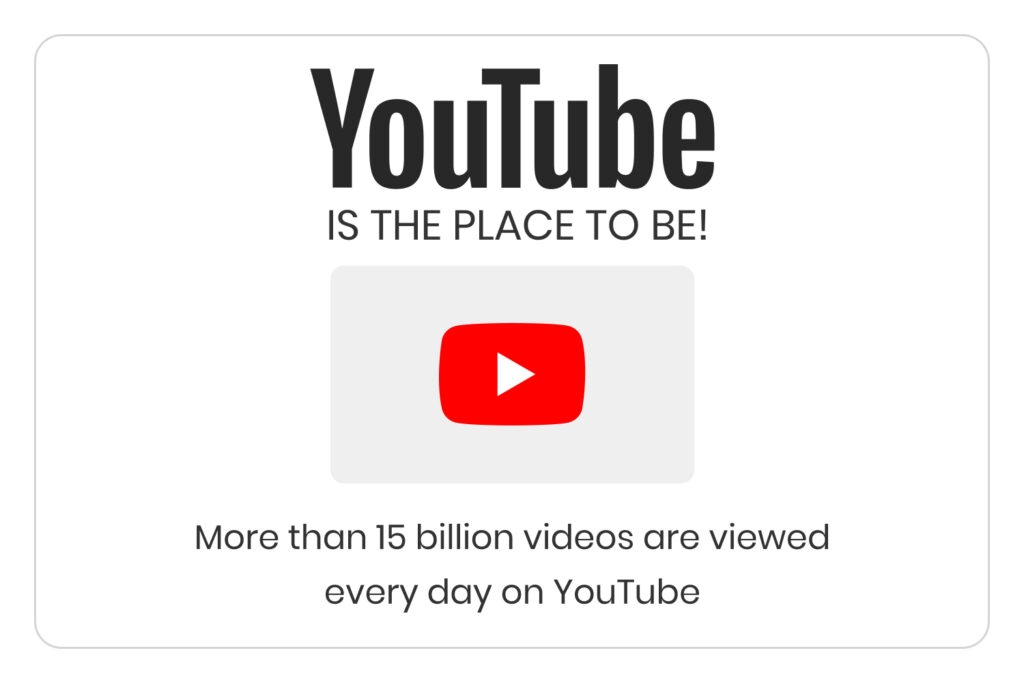
Are you searching how to get traffic to your website fast? Adding video content to your website is the finest way to increase website traffic in 2024. Video content has become very popular, so you must include it in your content plan.
Let’s look at some SEO statistics to help you understand the importance of adding videos.
- In 2022, 66% of internet traffic was on video (A Sandvine Survey). This will likely increase in 2024. Let’s have a look at more Video SEO Statistics.
- Google ranks video results 50x more often than text results (SEO Inc.).
- There is an 1100 to 1 chance that a video will be on Google’s first page, while text-based results have a 500000 to 1 probability.
- More than 15 billion videos are viewed every day on YouTube.
It means you can be ranked high if you play smartly.
You should embed videos into your blogs to get your videos to the top of Google and YouTube search results. People prefer watching videos rather than reading.
Reuse Old Content for Videos
If you plan to reuse your content, this is a fantastic choice!
Making videos on previously published blog posts is one method of content reuse. To begin including video versions of your content, start with the posts that have received the most attention.
Also, monitor comments, shares, and views. They all boost video rankings.
8. Through Repurposing Content
Don’t let your older content gather dust. Give them a new lease of life by repurposing them into different formats like podcasts, videos, or slideshows. This strategy can help in reaching a different set of audiences to redirect more traffic to your website.
Moreover, don’t forget to update your content according to new trends and new information.
How to Increase Website Traffic Through Social Media
Increasing website traffic through social media is not a complex affair. In fact, with the right strategies in place, you can attract more visitors to your blog easily and swiftly. Below are a few ways to increase website traffic through social media.
1. By Promoting Content on Social Platforms
Promote your blog content on different social platforms. Don’t just limit yourself to the usual suspects like Facebook and Twitter. Consider sharing your blog posts on visual-centric platforms like Pinterest and Instagram.
Don’t forget to tailor your message to suit each platform’s audience for maximum impact.
2. By Using Hashtags Wisely
You can attract more traffic by leveraging the power of hashtags to expand your reach.
First, research popular and trending hashtags in your niche and include them in your social media posts to attract a relevant audience. Don’t go overboard; just use a few targeted hashtags for each post. Experts suggest you should not use more than 8 hashtags in a post.
3. By Implementing the SSB Plugin for Social Share Buttons
Adding social share buttons to your blog posts using plugins like SSB can significantly boost traffic. It makes it easy for your readers to share your content with their network, potentially bringing in new audiences. Ensure that the share buttons are visible and easily accessible to encourage sharing.
You can install the SSB plugin right from your WordPress dashboard.
4. Through Audience Engagement
Engaging with your audience can never be overstressed. Respond to comments and messages and engage in conversations on social platforms. This builds trust and encourages more Engagement and visits to your website or blog.
You can create polls or surveys related to your blog topic. It’s an easy way for your audience to interact and share their opinions.
You can also go live and interact with your followers in real-time. You can host Q&A sessions, behind-the-scenes tours, or live demonstrations.
If your organization owns a WordPress plugin and you have web blogs regarding this. You must also have a social media presence. In this case, you can engage with your audiences in different ways.
For example, you can post:
Did you know you can easily create a child theme in WordPress? Stay tuned to our blog to learn how! #WordPressTips
Or,
“We love seeing your success stories! Share your website built with our plugin and get featured on our blog! #WordPressSuccess”
5. Leveraging LinkedIn Company Pages
A LinkedIn company page can be a goldmine if your blog targets professionals or industry enthusiasts.
You can make your company’s page on LinkedIn. You can post articles, share insights, and engage with industry peers to build an extensive professional network. It’s a great platform to showcase your expertise and draw traffic to your blog.
Social media is a powerful tool for driving traffic, but it takes strategic efforts to see real results. If you’re looking for ways to maximize your social media presence, check out how to analyze and increase traffic to your website with social media.
How to Increase Website Traffic Using Google Analytics
We hope you all understand the value of web traffic. After all, what’s the point of crafting compelling content if no one’s there to read it? That’s where Google Analytics 4 (GA4) comes into play. It’s your trusty companion in the world of digital competition, helping you navigate the way to success.
Below are a few ways to use Google Analytics to drive more traffic to your WordPress site.
1. By Monitoring SEO Optimization
Use Google Analytics to find the keywords people are using to land on your website. Optimize your content with these keywords to improve your site’s SEO and attract more visitors. But for this, you need to integrate GA4 into the Google Search Console.
By monitoring their performance, you can assess the effectiveness of your SEO efforts. Are your focus key phrases bringing in the desired traffic? If not, it’s time to refine your SEO strategy and optimize your content accordingly.
2. By Identifying Top Performing Content/Products
Google Analytics helps you pinpoint the content or products attracting the most traffic and Engagement from your audience. Understanding what your audience prefers enables you to craft more of such content, encouraging increased site traffic.
How to Access?
Navigate to Engagement>> Pages and Screens.
This section provides data on the most visited pages on your website, showing you what content is performing the best.
Analytify’s users can also enjoy it from on Analytify dashboard right from their WordPress site.

3. By Understanding User Acquisition
By monitoring the user acquisition on your site, Google Analytics allows you to make informed decisions. You can track metrics like engagement rate and average session duration to understand what’s keeping your visitors engaged or what’s driving them away and then fine-tune your content strategy accordingly.
How to Access? You can find data on user acquisition by navigating to
Acquisition >> User acquisition.
Here, you can access a range of metrics, including events, conversions, users, engagement rate, and average engagement time, which give insights into how users interact with your site.
However, you can also access it from your WordPress site if you are using Analytify.
4. Understanding Your Audiences
One of the underrated features of Google Analytics is its ability to provide detailed demographic data about your audience. This includes information on the age, gender, and interests of your site visitors. Leveraging this data can help tailor your content and marketing strategies to suit your audience’s preferences, thus potentially attracting more visitors.
How to Access it?
To access it, navigate to Reports >> Users >> Demographic Details.
You can also get thse details on your Analytify dashboard.
5. By Tracking Monetization Reports
If you have an eCommerce store, you can check the performance of your products and sales by motoring and analyzing monetization reports in GA4.
For this, you need to navigate to Reports >> Monetization. Then, you can explore Ecommerce purchases, In-app purchases, and up to 10 important metrics, i.e., items purchases, items revenue, etc.
However, if you are using Analytify, the best Google Analytics WordPress plugin; you can check your E-commerce sales data in detail from the Analytify dashboard on your WordPress site. Read How To Enable Google Analytics Ecommerce Tracking
With the power of Google Analytics in these ways, you can carve a path toward a website bustling with vibrant and engaged traffic. It’s all about making informed decisions and tweaking your strategies based on the insights you gather!
What if you can access all this information right from your WordPress site? Yes, you can through Analytify, the best Google Analytics WordPress plugin.
With the help of Analytify, you can access all the data on your WordPress site, including ecommerce purchases.
More Ways To Increase Website Traffic on WordPress
Following are a few more ways to increase website traffic on the WordPress site:
1. Through Lead Generation
Lead generation is the cornerstone of increasing website traffic. It involves capturing the interest of customers and encouraging them to provide their contact information. This can be achieved through presenting offers as lead magnets such as eBook Downloads, webinars, or free trials. Once you have their details, you can nurture these leads and direct them to your website for valuable content.
2. Through Email Marketing
Email marketing remains a potent tool for driving traffic. By sending your subscribers engaging newsletters, product updates, or exclusive offers, you can influence them to visit your website. Make sure your emails are personalized and contain valuable information to keep your audience engaged.
3. Through Paid Advertising Campaigns
Paid advertising, such as Google Ads and social media campaigns, can provide an immediate traffic boost. These platforms allow you to target specific demographics and interests, ensuring your website is seen by potential customers. Be sure to optimize your ads for maximum effectiveness and monitor their performance regularly.
Bonus Tools To Generate More WordPress Traffic
When it comes to the world of blogging and WordPress, the age-old saying holds true: “If you build it, they will come.” But sometimes, they need a little nudge. There are several tools out there that can help you to give your traffic a boost. Let’s dive into three bonus tools that could make a world of difference for your website’s traffic.
Think of Analytify as your personal detective that keeps tabs on your WordPress site’s traffic. It simplifies Google Analytics for WordPress users.
It has a user-friendly dashboard. It means you don’t need to drown in confusing charts and graphs. Analytify presents data in a simple, easy-to-understand manner.
You can even see how a new post is performing right away. Analytify’s real-time statistics give you immediate insights.
You can know which social platforms are driving the most traffic to your site.
From understanding your audience to optimizing your content and SEO strategy, Analytify offers the tools you need to succeed in the competitive online landscape.
So, if you’re looking to boost your web traffic and elevate your online game, give Analytify a try. It’s a powerful tool that can help you achieve your goals and ensure your website performs in the digital world. Read How to Install And Activate Analytify Pro Plugin.
Ahrefs offers powerful features for boosting your site’s visibility.
It helps you in keyword research. You can discover which keywords are trending and how you can incorporate them into your content.
You can also do competitor analysis. It gives you a sneak peek into your competitor’s strategies.
It also helps you in exploring backlink opportunities. You can learn where to get quality backlinks to enhance your site’s authority.
Ahrefs analytics can help you create a well-informed SEO strategy, create content that resonates with your target audience, and ultimately increase your web traffic. So, if you’re serious about growing your online presence and driving more visitors to your website, Ahrefs is a must-have tool.

Google Search Console is your treasure map to discover what keywords and phrases lead people to your site. It shows you the most common search queries related to your site. You can optimize your content for those keywords to attract more visitors.
It’s not only about getting people to see your site. It is about getting them to click on your products or content. Google Search Console lets you see your CTR, the ratio of clicks to impressions. You can get more clicks by having creative and engaging titles and meta descriptions.
Google Search Console also points out errors on your site, like broken links or crawl issues. Fixing these issues ensures that Google can navigate your site smoothly, boosting your search ranking and web traffic.
By utilizing its features to monitor your website’s performance, identify and address issues, and optimize for search engines, you can boost your site’s visibility in search results. This will ultimately boost the traffic on your WordPress site.
Beyond increasing traffic, it’s equally important to measure and understand the flow of visitors to your website—learn how to accurately assess your site’s reach by checking out our detailed article on how much traffic your website really gets, which explains the metrics behind visitor counts.
Increase Website Traffic FAQs
How to increase website traffic organically on my WordPress site?
There are several effective strategies to boost traffic to your WordPress site. These include creating high-quality content, optimizing your site for search engines (SEO), promoting your content on social media, and engaging with your audience.
Is SEO important for increasing traffic on my WordPress site?
Yes, SEO is crucial. Optimizing your content and website for search engines helps improve your site’s visibility in search results, leading to more organic traffic. Utilize SEO plugins like Yoast SEO to assist with this.
What role does content quality play in driving traffic to my WordPress site?
Content quality is essential. Engaging, informative, and well-written content not only attracts more readers but also encourages them to stay on your site longer and return for more. Quality content is also more likely to be shared.
How can I promote my WordPress site on social media effectively?
To promote your site on social media, share your content regularly, use relevant hashtags, and engage with your followers. Consider running paid social media ads to reach a broader audience and drive traffic to your site.
Are there any WordPress plugins that can help increase site traffic?
Yes, there are several plugins available for WordPress that can aid in increasing site traffic. Examples include SEO plugins like Yoast SEO, social sharing plugins, and analytics plugins like Google Analytics for tracking your traffic.
Can I collaborate with other bloggers to increase traffic to my WordPress site?
Absolutely! Collaborating with other bloggers in your niche through guest posting or joint projects can help you tap into their audience and gain more exposure. It’s a valuable strategy for increasing traffic.
What should I do if my WordPress site’s traffic is growing less than expected?
If you need to see the desired results, reassess your strategies.
Focus on improving your content, SEO, and promotion efforts. Seek advice from experienced WordPress users or professionals, and continue to refine your approach.
Is it beneficial to run paid advertising campaigns to increase traffic to my WordPress site?
Paid advertising, such as Google Ads or social media ads, can effectively drive traffic to your WordPress site. However, it’s important to set a budget and target your ads effectively to ensure a positive return on investment (ROI).
Conclusion
To conclude, increasing website traffic on WordPress is a manageable task. By implementing the strategies discussed throughout this blog, you can significantly boost your site’s visibility and attract more visitors.
We began by diving into the world of SEO, emphasizing the importance of keywords, latent semantic indexing (LSI), optimizing headlines, and ensuring your URLs are user-friendly. These fundamental SEO techniques lay a strong foundation for driving organic traffic to your site.
We then explored the power of video content, local SEO, and mobile optimization, recognizing the changing landscape of online traffic. Adapting to these trends can give your website a competitive edge in today’s digital world.
Quality content remains king, and we delved into creating high-quality, informative posts through competitor analysis, focusing on top-of-the-funnel topics and incorporating engaging visuals and infographics. Guest posting and content repurposing are also highlighted as effective ways to maximize the reach of your content.
Using social media platforms is another key aspect of boosting website traffic. We discussed strategies such as content promotion, hashtag usage, and social share buttons to leverage the vast audiences on social networks.
Google Analytics emerged as an invaluable tool for understanding your audience and fine-tuning your strategies based on real data. By tailoring your content to your audience’s preferences and behaviors, you can optimize your site for success and increase WordPress traffic.
We rounded up our exploration with additional methods like lead generation, email marketing, and paid advertising campaigns, providing a comprehensive guide to drive traffic to your WordPress website.
To top it all off, we introduced some bonus tools to supercharge your efforts and help you achieve even greater WordPress traffic. With these tools, you can take your website to new heights.
Remember,boosting website traffic is crucial, but ensuring your site’s data is secure is equally important. Regular backups play a key role in this. Discover the best tools in our roundup of the Top WordPress Backup Plugins.
We hope this blog helped you learn ways to increase website traffic on WordPress.
Once you’ve implemented these strategies and started seeing more visitors, you’ll want to understand how your audience interacts with your site. This is where understanding hourly traffic patterns becomes crucial.
For a detailed breakdown on generating hourly traffic reports in Google Analytics 4, check out this resourceful guide on GA4 hourly traffic reports
By analyzing these reports, you can identify peak traffic times, content performance across different hours, and user behavior patterns.
You may also like to read How Do Search Engines Work in 2024?
We’d love to hear your thoughts, questions, and experiences. What steps will you take to drive more traffic to your WordPress site? Share your points in the comments below!


